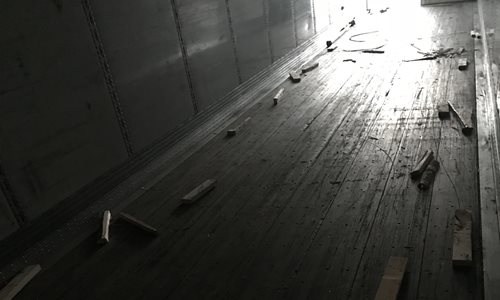Always being one to diversify what types of great paying loads I find, doing things most don’t seek out like tanker-endorsement necessary chemical totes and driver assist jobsite loads, few loads I accept take more consideration and preparation than loads requiring “block and brace” securement. Though I am very selective about which facilities I haul out of and into with these loads, there are still some questions I ask, steps I take and aftermath to deal with on every one of these loads. Planning ahead and asking the right questions on these loads not only helps mitigate damage to my equipment, but also makes sure I am charging the right price for the job!
When I completed a phase of hauling spent forklift batteries for one of the major retail distribution centers in the area earlier this year, I didn’t give a second thought that it might lead to me getting a call to haul another phase recently. These spent batteries get shipped out in waves and get hauled directly to the plant that melts them down. Of course, one of the special requirements for these to be exempt from placarding is the method used for securing them in the dry van trailer. This is where the “block and brace” term comes in, as the large batteries are steel banded to a pallet and then that pallet is then secured to the wood trailer floor with 2”x4” pieces of lumber and nails. Of course I add my own straps and load bars for extra securement, since safety is of the utmost importance!

When preparing for these loads, it is important to ask what will be the exact specifications for the “block and brace” being used on that particular load. I have hauled for one shipper on these types of loads that though it was okay to just lay a single plank behind the last pallet. While this might help eliminate potential for floor damage, this does nothing for mitigating side-to-side movement of the pallets, or even the movement within the small font-to-rear gaps that exist in even the tightest of loads. Also, be sure to check what size nails they are using, since anything bigger than about a 3” standard nail has the potential to punch holes completely through and leave daylight holes in the trailer floor when the nails are removed.

Make sure you clarify as well who is responsible for the cleanup and removal of all bracing and the materials used to do it. Sometimes the aftermath can be worse to deal with than the loading and bracing itself (as pictured in the shot of my trailer post-unloading), so making sure to have a good 30” or longer prybar and claw hammer on hand can pay dividends from a small investment at your local tool store! It also doesn’t hurt to have a tube of wood bonding nail hole filler on hand to keep your floors in good shape afterwards. Whether it’s a load of non-haz batteries, or a few forklifts that are being blocked & braced, be sure to know exactly what you’re in for. Most of all, remember that these types of loads command a premium for the extra work and potential for damage that can be incurred by agreeing to haul them, so charge accordingly!